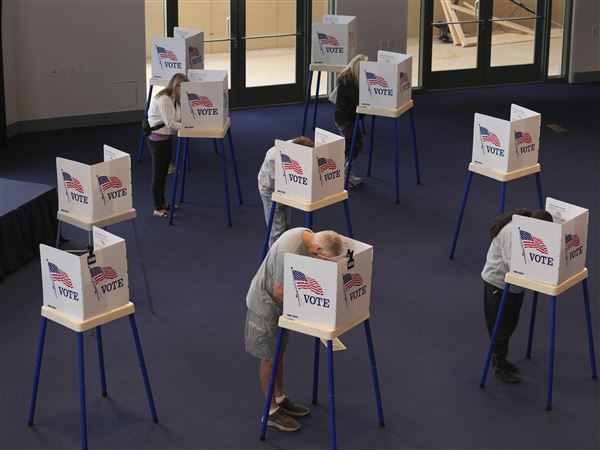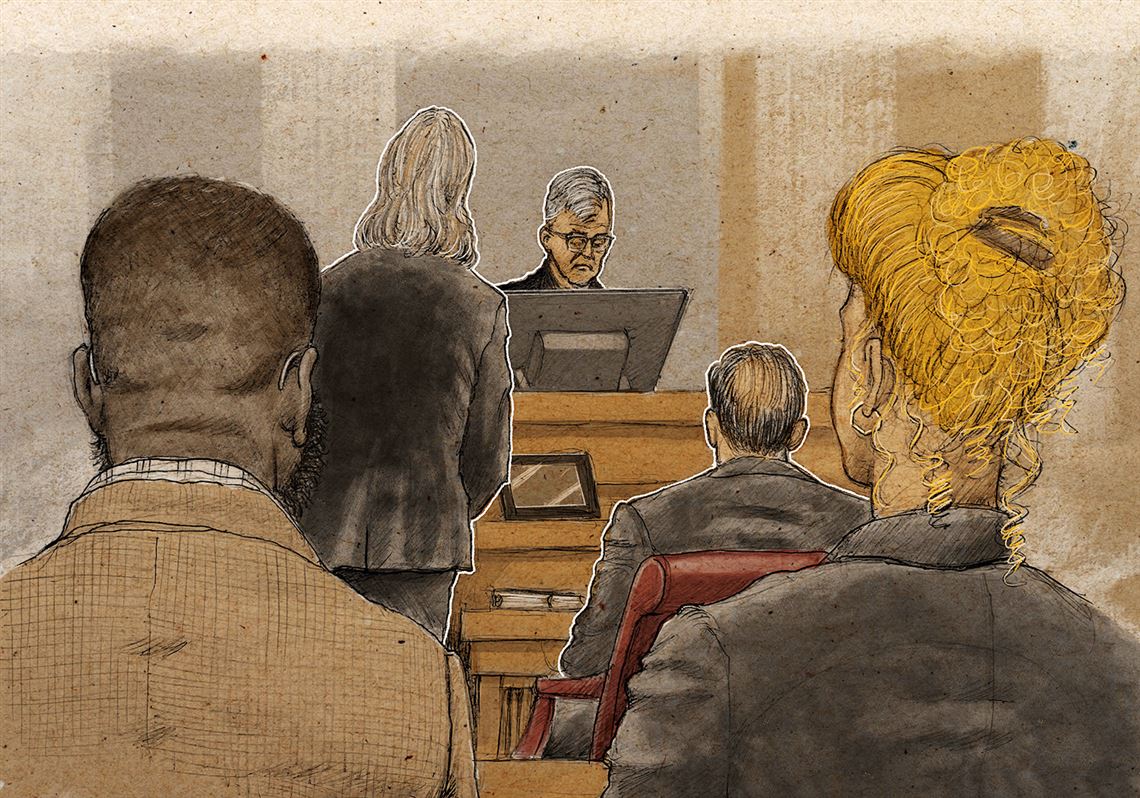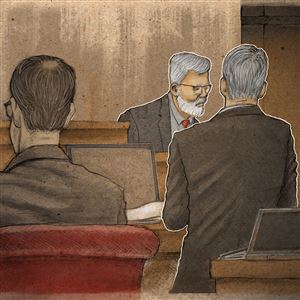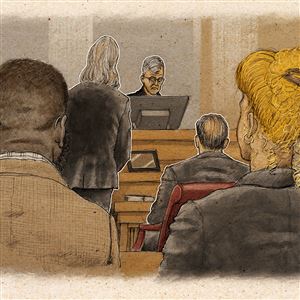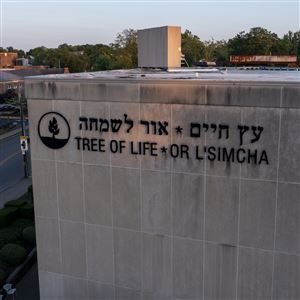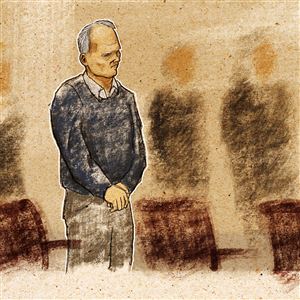Robert Bowers’ mental tumult began early in life, evidenced by the fact he spent most of age 13 shuffled among psychiatric hospitals. From there, he drifted through adulthood and, a little over five years ago, he sank into a world of delusions that took such hold he didn’t choose but rather felt forced to act on Oct. 27, 2018.
That’s what defense attorneys for the convicted synagogue shooter want jurors to take away from the past week of testimony.
Prosecutors arguing the government’s case, though, want jurors to see Bowers as a man who acted not on delusions but on hateful white supremacist views and rhetoric, planning and processing and making decisions that showed he knew exactly what he was doing.
Mr. Bowers’ attorneys began mounting their case in earnest last week, bringing in multiple experts who testified they believed Bowers suffered severe mental illness — namely, schizophrenia. Others testified to damage neurological exams showed and told jurors the defendant has signs of epilepsy.
Jurors on June 16 convicted Bowers of all 63 federal charges against him. Those charges stemmed from the attack on the Squirrel Hill synagogue that housed the congregations Tree of Life, Dor Hadash and New Light. Eleven were killed: Richard Gottfried, Joyce Fienberg, Rose Mallinger, Jerry Rabinowitz, Cecil and David Rosenthal, Bernice and Sylvan Simon, Daniel Stein, Melvin Wax and Irving Younger.
On Monday, the next phase of the trial began: the penalty phase, which will happen in two parts. In this first part, jurors must decide if Bowers is eligible for the death penalty. Their decision hinges upon prosecutors proving that Bowers was capable of forming the intent to kill and that the crimes had at least one of four aggravating factors.
If jurors determine he is eligible for the death penalty, they will then hear evidence from both sides and ultimately decide if Bowers spends life in prison or is sent to death row.
Eligibility testimony resumes Monday morning. Court is in session only three days this week.
Prosecutors, for this part of the trial, made their case in one day. Among the aggravating factors they sought to prove was that at least some of the victims were particularly vulnerable because of their age or physical or mental impairments.
The children of Joyce Fienberg, Rose Mallinger, Bernice and Sylvan Simon, Dan Stein and Melvin Wax all testified to their parents’ age — all over 70 — and how they’d slowed as they got older. Diane Rosenthal spoke of her brothers, Cecil and David, who were in their 50s but functioned at around a preschool level.
Over the next four days, experts hired by the defense painted a picture of a man so wracked by delusions — specifically that Jewish people were bringing in invaders and committing white genocide — that he truly believed he had to act.
Medical records show the tumult began early for Bowers.
He was admitted to McKeesport Hospital when he was 13 on Sept. 23, 1985. He remained there until Oct. 9. During his stay, medical records indicated he both acted out and remained secluded and socially withdrawn.
Those records also referenced a “suicidal gesture” at age 10.
He was diagnosed with depression, chronic and adolescent adjustment reaction and “attempted homicide” after he allegedly sprayed aerosol toward his mother and tried to light it on fire.
From Oct. 10 to Nov. 21, 1985, Bowers was hospitalized at Southwood Psychiatric Hospital in Upper St. Clair. There, records said, he showed a “marked regression.” He acted out toward staff but also remained isolated, withdrawn and depressed.
He was transferred from Southwood to the Bradley Center near Robinson from Nov. 22 to June 5, 1986. There, he responded well to medication, records indicated. By the time he was released, he’d spent more than eight months shuffled among inpatient facilities.
Other records indicated he’d been involuntarily committed again when he was 16. A police report from 1990 noted he’d been committed to St. Francis Medical Center for “repeated suicide attempts.”
“It’s very unusual to see such a severe psychiatric history in a child,” New Jersey-based neuro-psychiatrist Siddhartha Nadkarni told jurors. “[It shows] something was wrong with his brain at a very young age.”
Dr. Nadkarni also analyzed an electroencephalogram (EEG) he’d ordered for Bowers. The scan measures the brain’s electrical activity, and Bowers’ scan pointed to frontal and temporal lobe dysfunction, he said.
U.S. Attorney Eric Olshan, in cross examining the doctor, tried to pick apart and cast doubt on his report and EEG analysis, pointing out mistakes and arrows placed in misleading places on the EEG readouts. He pointed out that the doctor’s report did not label Bowers’ obsession with numbers as “delusional.”
He also pointed to differences in the doctor’s extemporaneous notes from his time with Bowers and the report he authored. Often, the doctor acknowledged that something from his notes did not seem worthy of inclusion in his report.
Mr. Olshan used the same tactic in his cross and re-cross of Texas-based forensic psychologist Richard Rogers. For two days he fielded questions and, in some cases, thinly veiled accusations, from attorneys in the case.
The psychologist, who has 40 years of experience, including more than 30 at the University of North Texas, met with Bowers four times last year: Twice in late September and twice in early November. He concluded that Bowers suffers from severe delusions and schizophrenia. He said Bowers likely had no way to stop himself when it came to the shooting that morning.
“He did not just believe [his conduct] to be correct,” Mr. Rogers said, “he believed it absolutely had to be done.”
In his delusional thinking, he said, Bowers believed “he was helping to save the white race.”
A bulk of the three-hour cross examination on Thursday and collective five hours of redirect and re-cross on Friday focused on Mr. Rogers’ 36 pages of handwritten notes he jotted during his four visits with Bowers.
Line after line, Mr. Olshan hammered the pieces of information the psychologist kept out of his report, like Bowers’ references to wanting “messy kills” and covering up the extra ammunition he had in his passenger seat the morning of the shooting.
Defense attorney Michael Burt, too, took Mr. Rogers back through his notes — even more extensively than Mr. Olshan had. He noted the psychologist also left out of his report some points that could have been deemed “favorable” in supporting his schizophrenia diagnosis.
“I was being selective,” he said. “Hitting the key points.”
He also said that Bowers normalized his delusional thinking to the point that he didn’t see anything wrong with it.
For example, he pointed to one question Bowers answered about himself: “My thinking has become confused.” Out of possible answers of “false,” “somewhat true,” “mainly true” and “very true,” Bowers selected “false.”
That’s despite the fact that Bowers clearly had disordered thinking and disordered thoughts, Mr. Rogers said, noting he often couldn’t follow Bowers’ train of thought or find the logic in it. Some of those thoughts included references to white genocide, a great fire, angels and aliens and battling against Satan and Jewish people.
Mr. Olshan asked Mr. Rogers if he was familiar with the theory of white genocide of the so-called white genocide manifesto, which he said includes tropes Bowers referred to. The witness said he wasn’t aware of the manifesto, nor had he done extensive research into the beliefs of white supremacists.
The prosecutor was trying to indicate to the jury that what Mr. Rogers deemed delusions were really just white supremacist beliefs held by others.
Earlier testimony focused on Bowers’ brain itself.
Dr. Vijayalakshmi Rajasekaran, a neurologist who is the director of UPMC Presbyterian’s EEG lab, did not perform the EEG, but she did examine and interpret the results, she testified. She said the results did not capture any evidence of an actual seizure, but some wave patterns captured by the scan can be indicative of someone who could experience a seizure.
Dr. Murray Solomon, a neuroradiologist and the medical director of the Bay Area MRI Medical Partnership in Los Gatos, Calif., said he reviewed an MRI of Bowers performed by a UPMC facility in early 2022.
His review revealed 28 white matter lesions. Gray matter, he explained, makes up the surface of the brain where the actual processing is done, whereas white matter is where the brain’s proverbial wiring is. In essence, white matter helps the different parts of the brain communicate with each other.
The lesions, he said, could be caused by a traumatic brain injury or other brain abnormalities, and they could generate epilepsy. He said he also noted a significant difference in size between Bowers’ right hippocampus and left hippocampus. That could indicate brain damage, he said.
Dr. Andrew Newberg, a physician of nuclear medicine in Philadelphia, also testified that he noted abnormalities in Bowers’ PET scan. The scans, called positron emission tomography scans, measure blood flow and glucose processing to produce three-dimensional images. In this case, it was of Bowers’ brain.
He said the abnormalities he observed in the scan, which was done in late 2021, indicated an overactive frontal lobe, which can be caused by inflammation. That can lead to a “persistently excited state,” he said.
Mr. Olshan asked the doctor if he was testifying that a person whose brain generated the PET scan he analyzed was incapable of forming the intent to kill another person.
“I don’t think that can be answered on the basis of a PET scan,” Dr. Newberg said.
First Published: July 2, 2023, 9:30 a.m.
Updated: July 3, 2023, 10:17 a.m.



